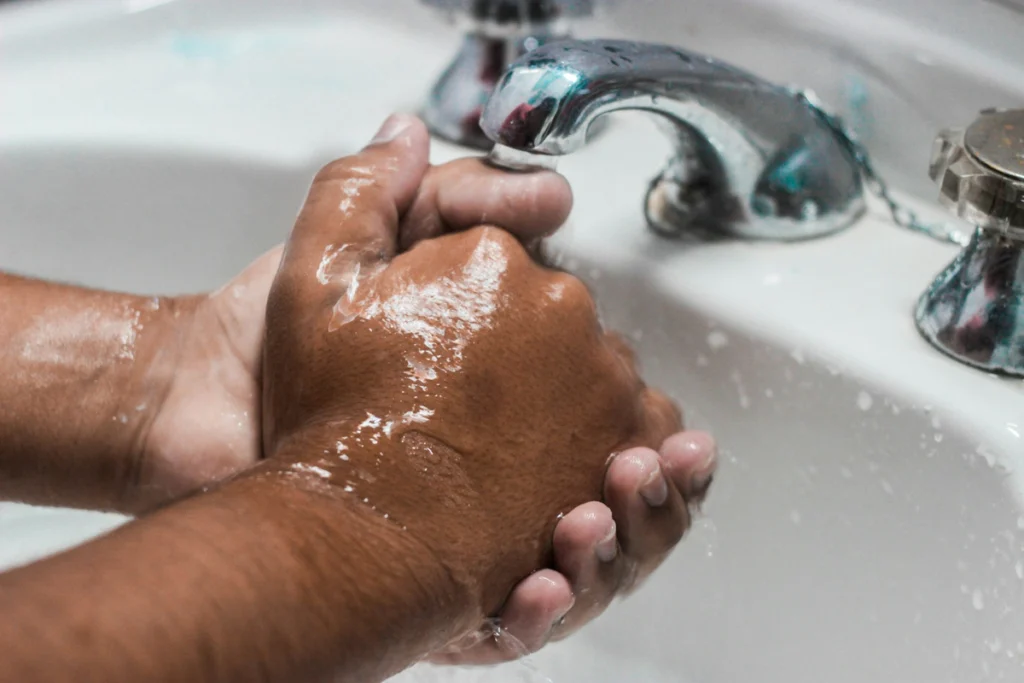Blog
P-Traps vs. S-Traps: What’s the Difference?

Plumbing is one of those things we don’t think much about—until something goes wrong. The pipes under your sink do more than just whisk away water; they also prevent unpleasant and potentially harmful sewer gases from making their way into your home. That’s where plumbing traps come in.
If you’ve ever taken a peek under your sink, you’ve probably noticed a curved pipe just below the drain. That’s a plumbing trap, and it’s an essential part of your home’s drainage system. But not all traps are created equal. The two most common types—P-traps and S-traps—serve the same basic function but differ in their design and effectiveness.
In this guide, we’ll break down what makes these traps different, why one is preferred over the other, and what you should know if you’re dealing with an outdated system. Let’s get into the details so you can make informed decisions about your plumbing.
The Quick Answer: What is the Difference Between an S-Trap and P-Trap?
A P-trap and an S-trap both create a water seal to keep sewer gases from entering your home, but the way they connect to your plumbing makes all the difference. P-traps are designed with a horizontal outflow pipe that allows for proper venting, making them far more reliable and code-compliant. S-traps, on the other hand, have a vertical outflow that can lead to siphoning—meaning they can lose their water seal and allow bad odors into your home. Because of this risk, modern plumbing codes typically prohibit S-traps in favor of P-traps.
What Are Plumbing Traps?
At its core, a plumbing trap is a simple but essential piece of your home’s drainage system. It’s the U- or S-shaped pipe you see under sinks, disposal units, tubs, and other drains, and its job is to keep sewer gases from traveling back up into your home. It does this by holding a small amount of water after each use, creating a seal that blocks those foul-smelling and potentially dangerous gases.
Without a properly functioning trap, you’d get a whiff of your sewer system every time you walked into the kitchen or bathroom—not exactly pleasant. Traps also help catch small objects that might accidentally fall down the drain, like rings or earrings, giving you a chance to retrieve them before they disappear into the plumbing abyss.
There are several types of traps used in plumbing, but the two most common—and the focus of this article—are P-traps and S-traps. Each has its own design, function, and, as we’ll see, its own set of advantages and drawbacks.
Anatomy of P-Traps and S-Traps
At first glance, P-traps and S-traps look quite similar—they both feature a curved section designed to hold water and block sewer gases. But the way they connect to the rest of the plumbing system is where the key differences emerge.
P-Trap
A P-trap is named for its shape, which resembles the letter “P” when viewed from the side. It consists of a downward bend followed by a horizontal pipe that connects to the wall. This design allows the trap to remain vented, which is crucial for preventing siphoning. Venting allows air to flow into the drain system, keeping the water seal intact and ensuring smooth drainage. P-traps are the standard in modern plumbing because they’re reliable, effective, and fully compliant with plumbing codes.
S-Trap
S-traps take a slightly different approach. Instead of a horizontal outflow pipe, the trap curves downward and then loops back up before draining straight down into the floor—hence the “S” shape. While this design does create the necessary water seal, it has a major flaw: without proper venting, water can be siphoned out of the trap when the drain is used. Once that happens, there’s nothing left to stop sewer gases from creeping into your home.
Because of this siphoning risk, most modern plumbing codes prohibit the use of S-traps in new construction. However, they still exist in older homes, and if you have one, it’s worth considering an upgrade.
Functional Differences and Potential Issues
At first glance, both P-traps and S-traps do the same job—holding water to block sewer gases. But the way they function within your plumbing system is where things start to diverge.
One of the biggest advantages of a P-trap is its built-in venting system. Because the pipe leading away from the trap runs horizontally before connecting to the drain line, there’s room for a vent to be installed. That vent plays a critical role: it allows air into the system, which prevents the force of draining water from pulling the trap dry. This means the water seal remains intact, and you don’t have to worry about sewer smells creeping in.
S-traps, on the other hand, don’t have that horizontal outflow. Instead, they loop downward and drain directly into the floor. Without proper venting, this creates a siphoning effect—when water rushes down the drain, it can pull too much water from the trap, breaking the seal. And once that seal is gone, nothing stops sewer gases from making their way into your home.
This siphoning issue is the main reason modern plumbing codes prohibit S-traps. If your home still has one, you might not notice a problem every day, but over time, it can become a serious issue.
Advantages of P-Traps Over S-Traps
If you’re weighing the pros and cons of P-traps and S-traps, the answer is pretty clear: P-traps are the better option, both in terms of performance and compliance with modern plumbing codes. Here’s why:
- P-traps stay sealed. Thanks to their venting design, they’re much less likely to lose their water seal, meaning they keep sewer gases where they belong—out of your home.
- They’re up to code. Since S-traps are more prone to siphoning issues, most building codes no longer allow them. If you’re installing new plumbing, a P-trap is required.
- Easier maintenance. If you’ve ever had to retrieve something from a sink drain, you know how handy it is to have easy access to the trap. P-traps are easier to clean and less likely to dry out compared to their outdated counterpart.
If your home still has an S-trap, it might be worth looking into an upgrade. The last thing you want is a dry trap allowing sewer gases to drift into your kitchen or bathroom.
Retrofitting S-Traps to P-Traps
If your home still has an S-trap, don’t panic—you’re not alone. Plenty of older homes were built with them before plumbing codes changed. The good news is, in most cases, you can swap an S-trap for a P-trap with some adjustments to the drain system.
First, you’ll need to figure out if your plumbing setup can accommodate a proper vent. A P-trap requires a horizontal pipe that leads into a vented drain system. If your drain goes straight down into the floor, you might need a plumber to install an air admittance valve (AAV) or a proper vent connection to keep the trap from siphoning.
While it might sound like a hassle, upgrading to a P-trap is worth it in the long run. It’s not just about following the rules—this upgrade ensures your home’s drainage works efficiently and keeps those sewer gases where they belong: out of your living space.
Maintenance Tips for P-Traps
Even the best plumbing setup needs a little attention now and then. P-traps are reliable, but they aren’t maintenance-free. Here’s how to keep yours working like it should:
- Check for leaks. Even a slow drip under the sink can turn into a mess over time. Give your P-trap a quick glance now and then to make sure everything is dry.
- Clear out buildup. Hair, grease, and soap scum can collect in the trap. If your sink starts draining slowly, removing and cleaning the trap is usually an easy fix.
- Keep the water seal intact. If you have a rarely used sink, run some water down it occasionally to keep the trap from drying out.
A little maintenance goes a long way in keeping your plumbing problem-free.
Final Thoughts on S-Traps and P-Traps
At the end of the day, plumbing might not be the most exciting topic—but it’s one of those things that keeps your home running smoothly. Choosing the right trap might seem like a small detail, but it makes a big difference in keeping sewer gases out and drainage working properly.
If your home has a P-trap, you’re in good shape. If you’re still dealing with an old S-trap, it might be time to consider an upgrade. A properly vented P-trap isn’t just code-compliant—it’s a more reliable solution that helps avoid odors, drainage problems, and unnecessary headaches down the line.
